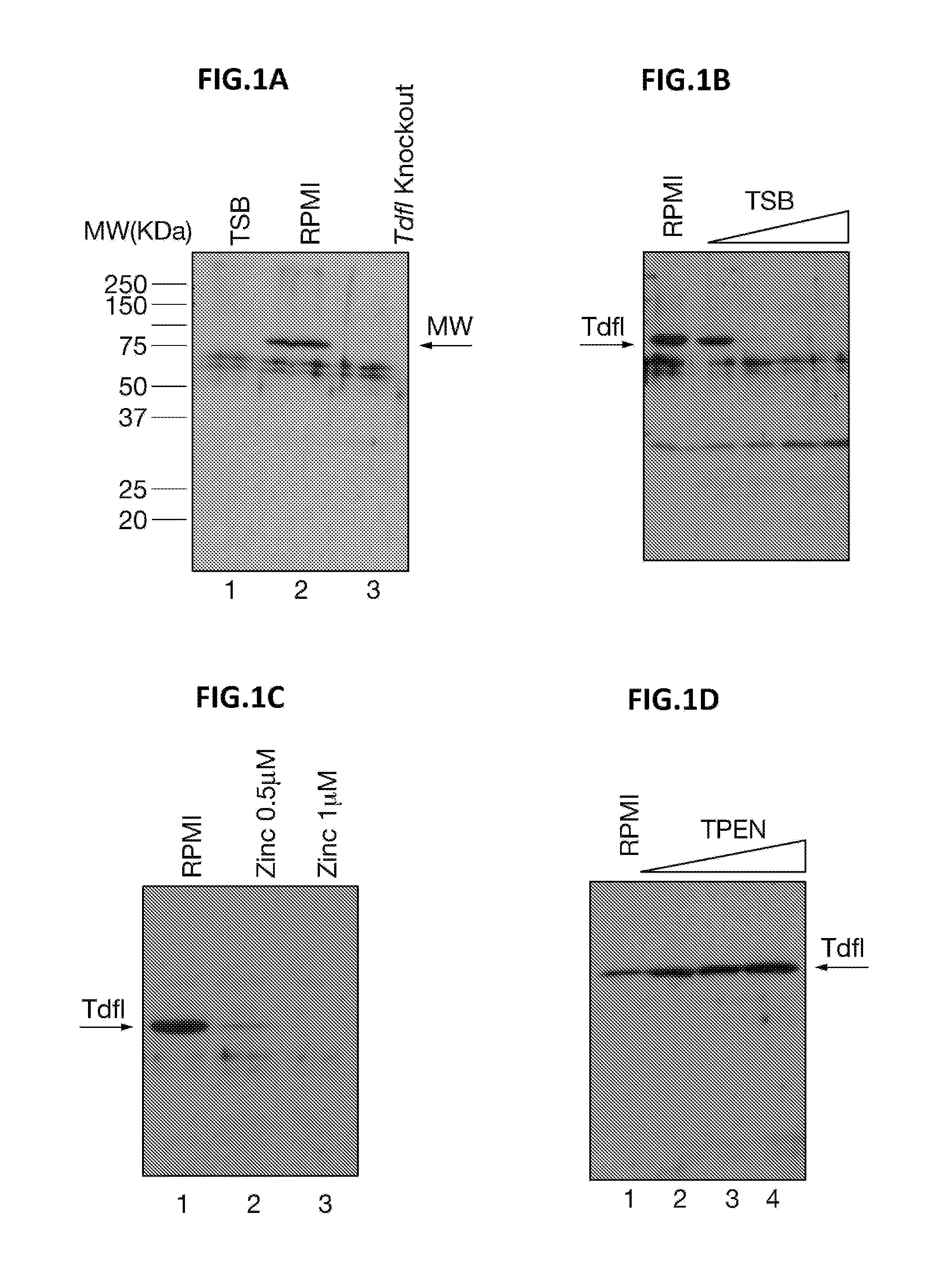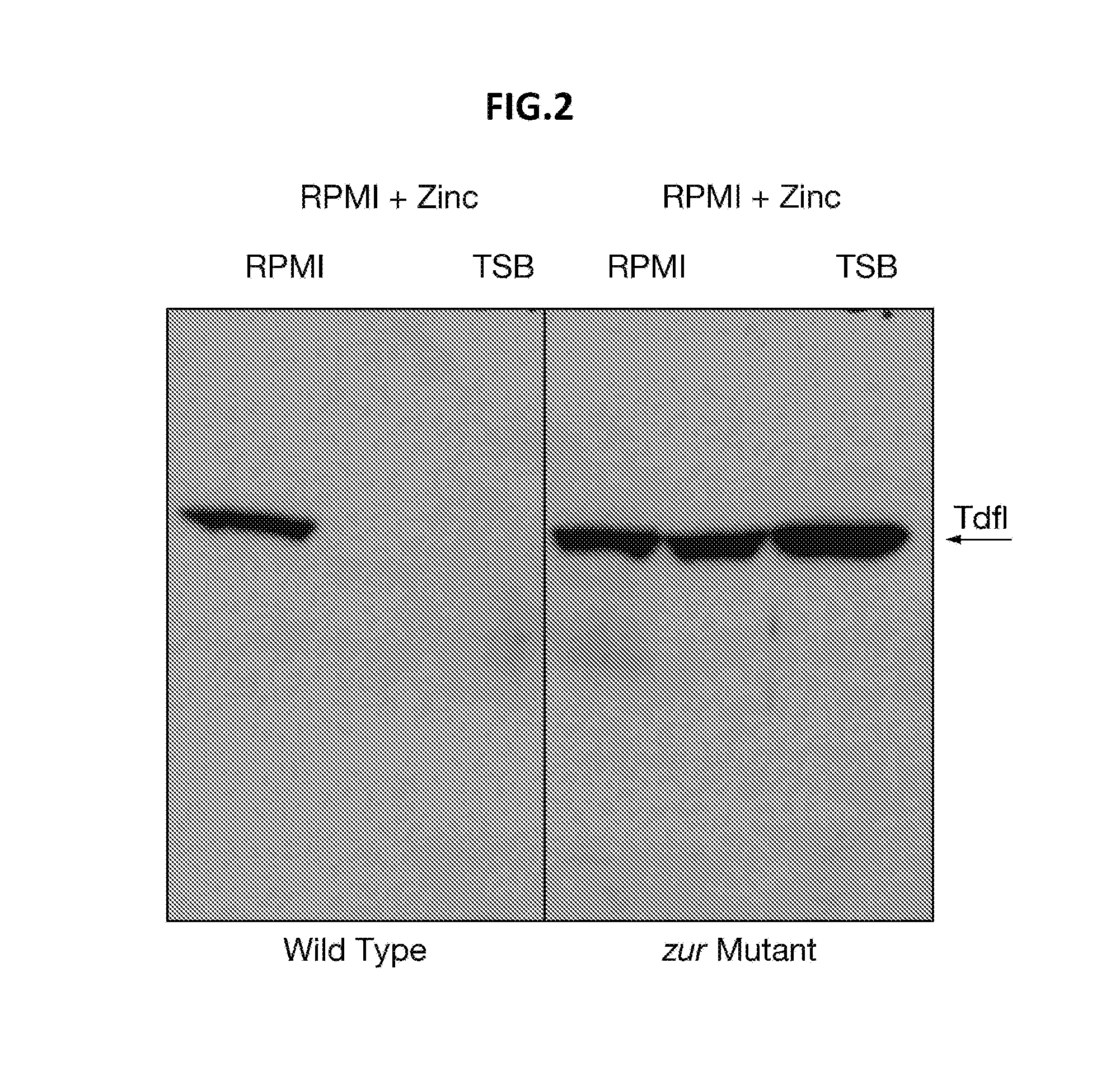Vaccine
a technology of immunogenic compositions and vaccines, applied in the field of vaccines, can solve problems such as impeded vaccine development, and achieve the effect of high degree of amino acid sequence conservation
- Summary
- Abstract
- Description
- Claims
- Application Information
AI Technical Summary
Benefits of technology
Problems solved by technology
Method used
Image
Examples
example 1
Immunogenicity of OMVs with Up-Regulation of TdfI
[0110]TdfI is a gene which is thought to be expressed when N. meningitidis is within the blood. It is therefore not normally expressed when strains are grown in conventional culture media, but wild-type strain H44 / 76, for example, can be made to express the protein in special culture conditions (RPMI culture media supplemented with hemin). The following experiment details the use of an H44 / 76 strain where TdfI expression has been recombinantly made inducible (through the use of IPTG). This allows the over-expression of TdfI on the surface of OMV vaccines made from the strain, and provides an easy way of culturing a strain expressing the antigen to establish whether antibodies generated against TdfI are capable of killing such a modified strain which expresses TdfI under normal culture conditions (+IPTG). The impact of IPTG on expression of TdfI on cells used in the SBA is shown in FIG. 7.
[0111]Groups of 10 mice were immunized three ti...
example 2
A Novel Zinc-Regulated Outer Membrane Protein in Neisseria meningitidis with Vaccine Potential
Abstract
[0114]Since the concentration of free iron in the human host is low, efficient iron-acquisition mechanisms constitute important virulence factors for pathogenic bacteria. In the Gram-negative bacteria, TonB-dependent outer membrane receptors are implicated in iron acquisition. However, transport across the bacterial outer membrane of other metals that are also scarce in the human host is far less clear. In this study we characterized a novel TonB-dependent receptor in Neisseria meningitidis. We show that the bacteria produce this protein under zinc limitation and that it is involved in zinc uptake. Furthermore, since the protein is highly conserved among isolates and is capable of inducing bactericidal antibodies, it constitutes a novel candidate for the development of a vaccine against N. meningitidis for which no effective universal vaccine is available so far. Homologues of the p...
example 3
ZnuD: a Potential Vaccine Candidate for a Simple and Universal Neisseria meningitidis Vaccine
Abstract
[0198]Neisseria meningitidis serogroup B is a major cause of bacterial sepsis and meningitis in younger populations. Available vaccines are based on outer membrane vesicles obtained from wild type strains. However, in toddlers and infants, they confer protection only against strains expressing homologous PorA, a major and variable outer membrane protein. In the quest to identify vaccine antigens allowing the development of vaccines able to prevent meningococcal infection in the younger populations, ZnuD (TdfI) has been identified as a potential candidate. Here, we have extended the analysis of the potential value of ZnuD showing that it is a very well conserved antigen expressed by all the N. meningitidis serogroup B strains tested when growing under Zinc limitation, induces cross-bactericidal antibodies against most of the strains tested, whatever the serogroup, and is also expresse...
PUM
| Property | Measurement | Unit |
|---|---|---|
| volume | aaaaa | aaaaa |
| OD | aaaaa | aaaaa |
| OD | aaaaa | aaaaa |
Abstract
Description
Claims
Application Information
 Login to View More
Login to View More - R&D
- Intellectual Property
- Life Sciences
- Materials
- Tech Scout
- Unparalleled Data Quality
- Higher Quality Content
- 60% Fewer Hallucinations
Browse by: Latest US Patents, China's latest patents, Technical Efficacy Thesaurus, Application Domain, Technology Topic, Popular Technical Reports.
© 2025 PatSnap. All rights reserved.Legal|Privacy policy|Modern Slavery Act Transparency Statement|Sitemap|About US| Contact US: help@patsnap.com



